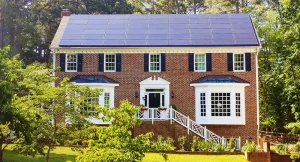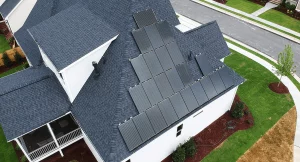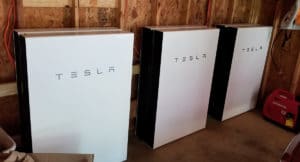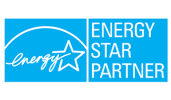Lessons in this Module
Is your home right for solar?
One of the most important questions you can ask is whether your home is right for solar. Although we’d love to see every home in North Carolina powered by a solar system, the reality is solar power isn’t a good match for every home. Between NC’s big beautiful pine trees and the infinite ways homes are designed and constructed, there are many factors that determine whether a home will be a good fit for solar.
These are the top barriers that you should look out for when figuring out if where you live is solar friendly, in order of importance:
- Your Home's Solar Potential
- The Electric Utility's Solar Policies
- Is Your HOA Solar Friendly
- Local Permitting and Inspections Department aka Authority Having Jurisdiction's Policies
Lesson 01
What factors do we look at to determine a home’s solar potential?
While some of these factors have stronger solar implications than others, finding the right balance between how each of these six areas impacts the other is important for maximizing your solar savings. Here’s our home solar checklist:

Space
We need a reasonable amount of unshaded space to put a solar system on your roof. An average 4-6 kW system (16-24 panels) will need 200-400 square feet. Beyond shading, vents, dormers, and other elements of your roof structure can limit the amount of space we have to work with when designing a solar system for you.

If your roof has limited or shaded roof space, don’t worry! We can install a ground mount solar system as well. The biggest benefit of going with a ground mount system is that shading can be avoided.
Since ground mounts are not limited by roof size or orientation, you may have more options when it comes to designing a system to meet your solar goals. We have some creative install methods, so you will have plenty of choices for how the system looks whether it’s a carport, pergola, low ground-mount, or something else!
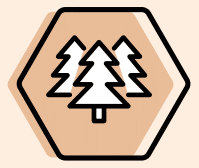
Shading
Shading is public enemy #1 when it comes to solar production. While solar cell technology has evolved to produce energy from the diffused light present on overcast days, energy cannot be generated in *complete* shade. Shade can come from many sources but when it comes down to it, the real MVP of shading is trees. This is why an in-depth assessment of your home (and trees) is so important when going solar.

The best way to gauge exactly how shading will impact your solar potential is by having a solar technician assess your home to evaluate whether we can position your solar array to avoid shading or if you’ll have to cut back or remove trees to make solar feasible. We typically do not like to recommend tree removal (we love trees!), but we also want you to have optimal solar production and will list it as a potential solution.

Location
The amount of solar energy that hits an area (also called solar irradiation) depends on its distance from the equator and local weather conditions. For example, according to the National Renewable Energy Laboratory (NREL), North Carolina averages around 4-5 kilowatt hours of solar energy per square meter.
This is more than the < 4 kilowatt hours per square meter that Alaska receives since Alaska is further from the equator. But this is also a little less than the American Southwest — which averages 5-6 kilowatt hours per square meter — despite the fact that we are similar distances from the equator since the Southwest has less precipitation throughout the year. Basically, the sunny Carolinas are great for solar!
This map from NREL shows the average solar irradiation for the United States.
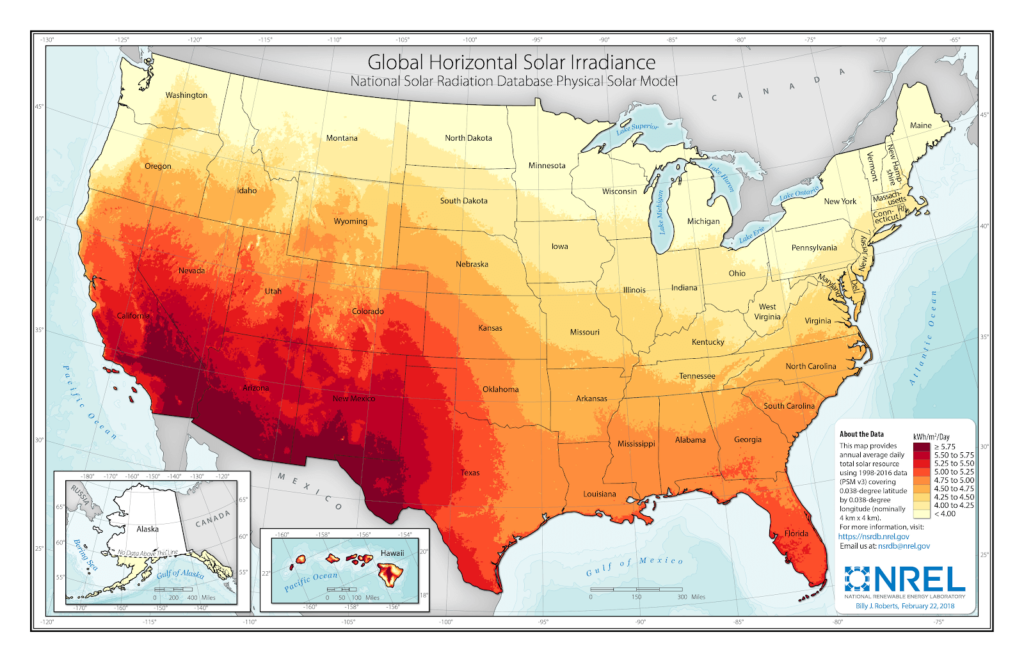
As you can see in NREL’s North Carolina specific map, solar irradiation is fairly constant across our state with the Great “Smoky” Mountains really being the only place where solar potential drops a little.
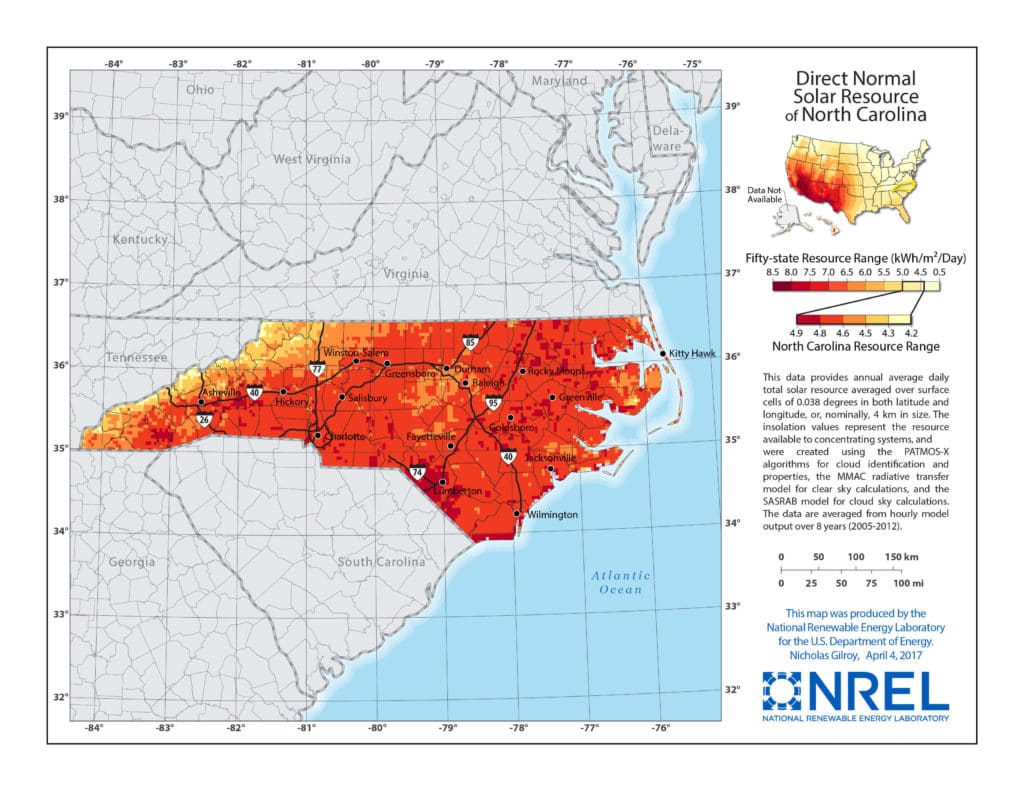

Orientation
Azimuth (pronounced az + uh + muhth) is the fancy solar industry term we use when referring to the cardinal orientation (north, south, east, west) of your solar system. Because North Carolina is in the Northern Hemisphere, sunlight hits from a southern angle. As a result, a solar system needs to be installed facing south to be optimized for solar production. You can see how the sun remains in the south, even as its position in the sky changes throughout the year, in this diagram:
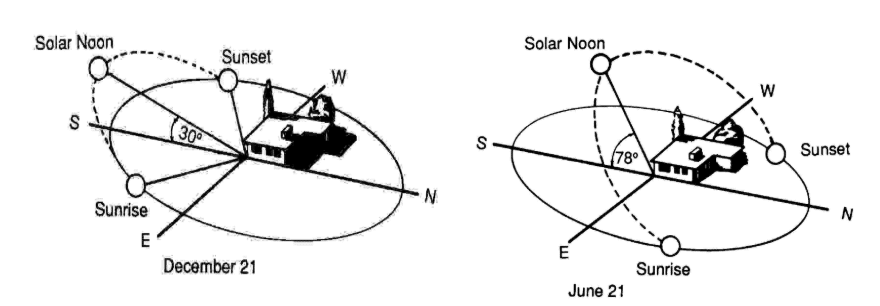
A perfectly south facing system would have an azimuth of 180° south. While south facing systems are optimal, the azimuth angle can range by 90° east or west and still receive a highly productive amount of sunlight. Production only really starts to drop off when we face panels northward (so we avoid that in 99% of cases).
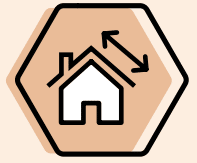
Tilt
A solar panel’s tilt is its angle relative to the ground. For a roof mounted solar system the tilt will equal the roof’s pitch (unless it’s a flat roof). Roof pitch is commonly measured on a rise-over-run ratio, so your roof pitch may be 6/12 or 7/12. Most homes typically range around 4/12 to 9/12 which translates from 19° to 37°.
The ideal pitch for a solar system in North Carolina with an azimuth of 180° is between 30° and 35° or a 7/12 to 8/12 roof pitch. As a solar system’s azimuth gets further away from south, flatter tilts are more advantageous. This psychedelic graph from Solmetric (the company that makes Suneye) shows the impact of tilt and azimuth on optimal solar production for Durham, NC.
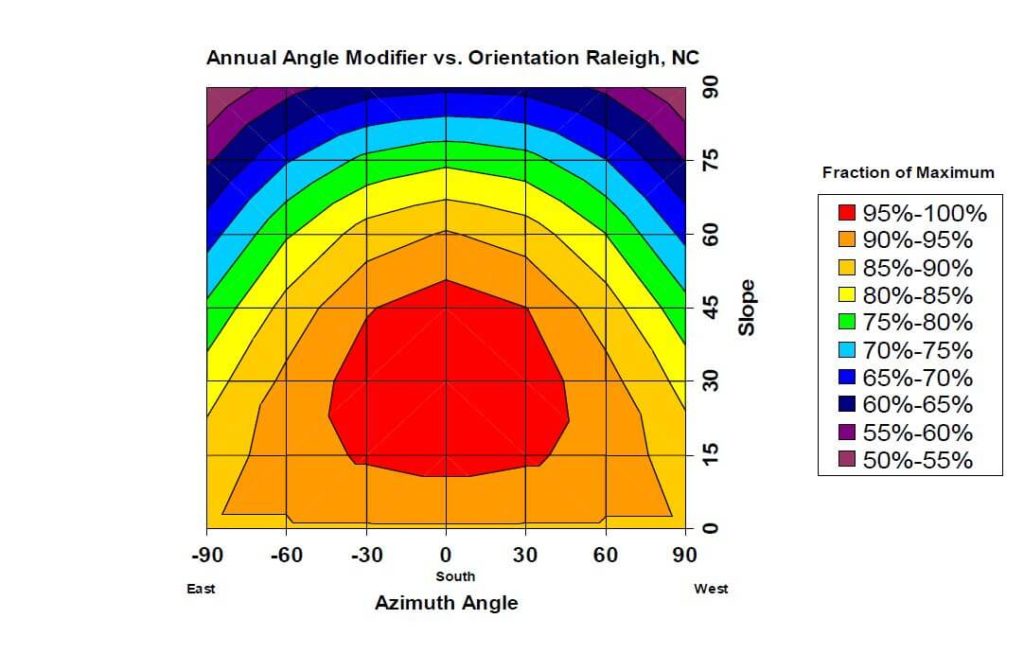
For ground mount solar systems we aren’t tied to a predetermined roof pitch so we can set the tilt to the optimal 30°-35°. For flat roofs systems, however, we generally limit the tilt to below 15° in order reduce the array’s exposure to wind.
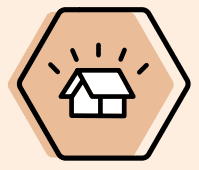
Roof Age
If you think you will need to replace your roof in the next 5-7 years, we highly recommend doing that before installing solar panels. We quote solar panel removals and reinstalls on a job to job basis, but typical costs are in the range of $4-$6K.
When you do need to re-roof, give us a call and we can take the panels down but leave the racking up. The roofers will re-flash all the feet, and then re-shingle. Afterward, we’ll put the panels back up and you’ll be capturing your solar savings again!
If your roof is fairly new or in good shape, now is a great time to go solar. The panels will actually protect the roof, and when it comes time to re-roof we may not have to take down the modules and you can replace shingles around it. Should you have any questions about your roof, our solar designers will take a look at it during your site assessment and give you a recommendation.
A Note About Online Solar Estimate Tools
There are plenty of online solar estimate tools and calculators out there like Google’s Project Sunroof and Solar-Estimate.
These are great tools to give you a general idea to get started on your solar journey. However, designing a solar system based on limited factors like home’s square feet will not give a full representation of what size system is needed to meet that home’s energy needs. Other elements like ground slope or roof vents are not very visible through satellite imagery.
Ultimately, a personalized solar assessment is really the best way to get an accurate estimate of your home’s solar production potential and what the savings will really look like for you based on your specific site and historic energy use.
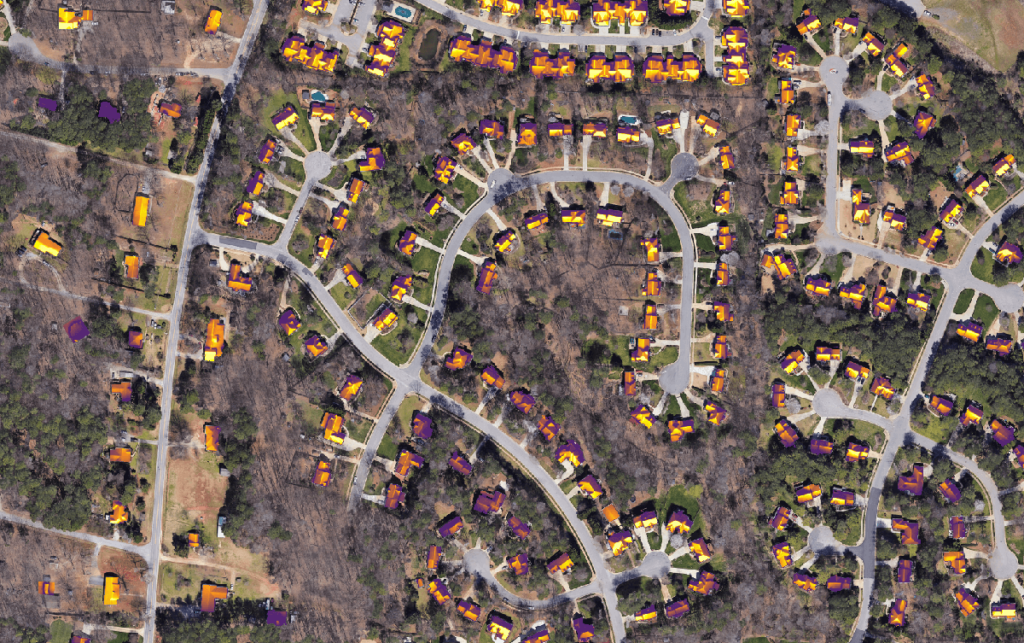
Solar 101 Guide
Lesson 02
How solar-friendly is your electric utility?
Your utility is the most important 3rd party entity influencing your ability to make the switch to solar. Each utility can set their own rules for how you interconnect to their electric grid and how they credit you for your solar production, known as interconnection. How your utilities handle these factors can make or break the viability of your home solar system.
Types of Solar Interconnection
Here are a few examples of the most common solar interconnection policies:
Net Metering
In North Carolina, net metering is the best way to hook up a residential solar system to the grid. In a true net metering scenario, all excess electricity you produce is credited back to you on your account at the same rate as charged.
For example, if you are net metered, the power from your system will first flow into your home to power whatever is being used at that time. Any extra power will be sent back out to the utility for a 1:1 credit to be used later.
Depending on your utility, if you produce more electricity than you consume for an entire month, you can roll your credits forward to the next month. We dive deeper into how Duke Energy handles rollover in our third Solar 101 module, Is Solar Right for You.
Sell-Excess
Many co-op and municipal utilities require you to sell your solar energy back to them. Sell-excess interconnection is very similar to net metering except for one key difference — any excess electricity you send back to the grid is purchased at a lower wholesale rate instead of at the same retail rate you pay when you purchase power from the utility.
Because of this, we generally design sell-excess solar systems to minimize the amount of solar production sent back to the grid so you can maximize your investment.
Buy-All-Sell-All
This is the most archaic and disappointing to solar dreams of the 3 interconnection types. This interconnection policy requires homes with solar to sell all of the electricity their system generates, typically at a low wholesale rate, while having to purchase all their power at the full consumer value.
Under this model, there is a very low return on investment for solar unless a battery system is involved. This is how all solar used to be installed in NC, but luckily that is not the case anymore.
Types of Electric Utilities
Here in North Carolina, there are more than 100 unique utility providers. NC Electric Utilities are broken into 3 main groups:
Investor Owned Utilities
- Have net metering in NC
- These are the big guys. They are regulated monopolies which have all aspects of their service and electric rates overseen by the North Carolina Utilities Commission
- Examples Duke Energy, Duke Energy Progress, and Dominion Power
Electric Membership Cooperatives (EMCs)
- Probably have net metering or a modified version of it
- These utilities serve historically rural areas and were established during the New Deal to bring electricity to rural areas. Thanks FDR!
- Examples Piedmont EMC, Central EMC, South River EMC, Wake EMC
Municipal Utilities
- Not Net Metering, probably Buy-All-Sell-All around 4 cents per kWh
- These are utilities administered by local municipalities. They generally have the highest rates for electricity in the state and the worst solar interconnection policies. This means that the customers who could benefit from solar the most (those with the highest bills) are prevented from doing so because of their local government.
- Examples Rocky Mount, Wilson, Wake Forest Power, Fayetteville PWC
North Carolina Electric Utilities Solar Policies
This map shows the approximate service territories for all utilities in North Carolina and lists whether (to our best knowledge at the time of publishing this) they offer net metering. For utilities that we work with less frequently, we always research the utility’s policy before designing a solar system so we can avoid horror stories like what happened to this Sanford couple.
Common Question
What are your options if your utility is not solar-friendly?
The best solution to this issue is a solar PV system with battery backup. This way, all excess electricity is stored in your home battery (Tesla Powerwall or Generac PWRcell) and each day after the sun goes down, your batteries provide electricity until they run out. After your batteries are drained, you would buy electricity from the grid at the same rate you do now. If solar + storage isn’t a viable option for your home at the moment, you can still take action toward getting solar into your community.
- Double check with the utility company, see if their policy will be changing anytime soon.
- Contact North Carolina Sustainable Energy Association to find out how you can advocate for Net Metering options with your utility and make solar an option for you and your home.
- Urge your utility to join the 21st century by adopting net metering, especially if you are in a co-op!
Lesson 03
Does your homeowners association (HOA) have solar restrictions?
After the utility, Homeowners Associations are the biggest 3rd party roadblock to going solar. If you don’t have an HOA then 1) count your blessings, and 2) feel free to skip this section. In 99% of cases, HOAs are not hard barriers for solar, but they can slow the process down and might impact your system design.
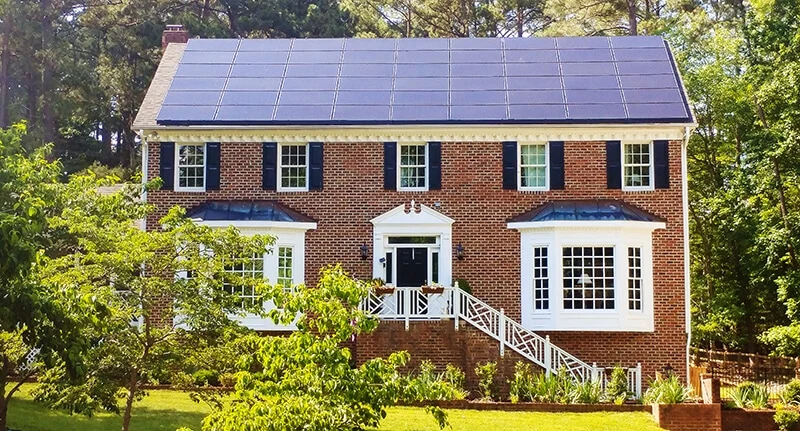
NC Solar Access Law
In 2007, North Carolina passed a solar access law (N.C. Gen. Stat. 160A-201) which prevents an HOA from establishing rules that outright prohibit solar after Oct 1, 2007.
However, the law can be interpreted to allow HOAs to create restrictions and regulations on solar installations on the front of a home and on roofs that face common/public areas.
The North Carolina Supreme Court recently ruled in favor of a homeowner’s solar rights, stating that HOAs could not prevent street-facing solar panels unless explicitly stated in their covenants.
Getting Your HOA On Board with Solar
In cases where an HOA regulates front of roof installs, we work with homeowners to present their case for approval to the HOA. To support our argument, we equip homeowners with custom 3D renderings of what the panels will look like on their roof and with pictures of solar systems we have installed on comparable homes in similar communities in the past.
Most of the battle with HOAs is a lack of familiarity with solar. Once we show them examples of solar in the 21st century, the HOA typically becomes more comfortable with the look and feel and their fears of bright blue Carter-era roof monstrosities disappear. In some cases, though, we do have to modify our system design by moving the panels to side roofs which might result in less solar production.
Lesson 04
What are your local permitting & inspections departments’ solar requirements?
Last on our list of 3rd party stakeholders is your local permitting and inspections departments or Authority Having Jurisdiction (AHJs). AHJs do not restrict you from going solar, but they can impact the timeline of your project.
Navigating the Solar Maze
There are over 900 unique local jurisdictions in North Carolina, each with the ability to enforce different standards and requirements for solar, and each with a group of inspectors with differing familiarity with how solar works. The result is a large degree of variability in what it takes to get a permit to install solar across North Carolina. That’s why it’s important to work with a reputable, local solar installer who is well established in your state.
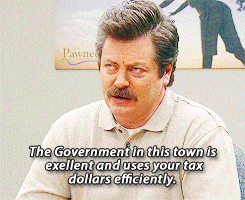
Luckily we handle all the permitting and interconnection paperwork for our SHINE Tribe of customers, but to get a sense of what we’re up against here are a few examples:
Wake County Solar
To install a residential rooftop solar system in Wake County’s jurisdiction, only an electrical permit is needed and no engineered designs are required to be submitted with the permit application. There is no plan review, and the permit will normally be issued within one day of the application’s submittal.
Going Solar in Cary, NC
For the same exact project in the Town of Cary’s jurisdiction, the permitting process would look very different. In this case, both a building and electrical permit would be required, the permit application would need to be supported by electrical and structural engineered designs, and the application would undergo a plan review normally spanning 2 weeks.
Perquimans County Solar
In an extreme example, Perquimans County Planning and Zoning department required us to send a letter to a multinational corporation headquartered in California, who happened to own the 2 tracts of wide-open farmland adjacent to one of our customer’s lots. We were tasked to ask them to attend a formal architectural review for a rooftop solar system to make sure the company would not be bothered by the [non-existent] glare from our system.
Predictably, this mega-corp did not respond to our letter or attend the county’s review meeting to speak on behalf of their empty fields to protect them from the deadly “solar glare” from the homeowner’s system. The homeowner was able to go solar at the end of the day, so all’s well that ends well– even if it was a ridiculous approval process.
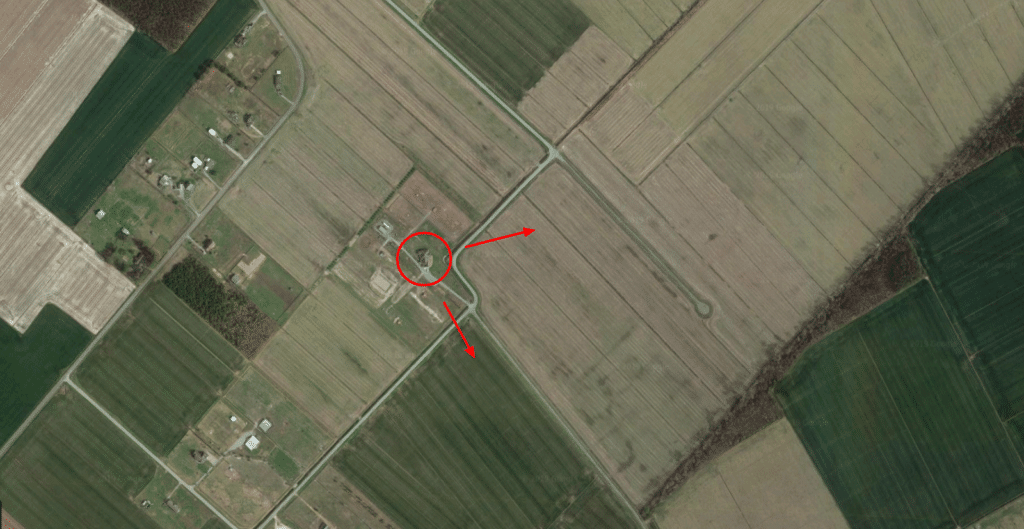
Again, at the end of the day, your local jurisdiction will only affect your project timeline and will not stop you from going solar, so it doesn’t need to be a consideration when you’re making the decision to power up with clean energy.
After two decades of experience working in NC, we have developed familiarity with many of NC permitting jurisdictions and know exactly how to navigate their unique requirements and quirks on behalf of our customers. Ultimately, if we can check off your home and utility as solar friendly, we’ll do our best to make sure your HOA and AHJ get on board as well.
Quiz Yourself!
What's Next?
Module 04: Designing Your Solar System
Alright, so now you know your solar journey is not just a personal journey of fulfillment and purpose, but one that you get bring along 2-3 of your best friends: your utility, HOA, and AHJ.
If your home and local policies check the solar boxes, it’s time to move on to all the fun details of sizing and designing a solar system for your energy needs. It’s time to move on to Module 4: What size solar system do you actually need?
Ready to kick your solar journey into full gear? Reach out for a free solar assessment or schedule a meeting to have your questions answered by our solar educators, Dave, Sam, or Sophie.
Learn More Solar 101
Ready to Get Started?
Schedule a free assessment to learn more about solar power & battery storage for your home.
About Us
North Carolina’s solar power and building performance expert. Founded in 2001, we’ve worked for 20+ years to improve the way people make and use energy.


